
Having an operations manual may not be glamorous, but preventing the disasters caused by human error and bad processes can save your business and even (in extreme circumstances) millions of lives.
If you’ve ever seen Dr. Strangelove, you’ll know it’s ridiculous. You’ve got a mad scientist, a cowboy pilot riding a bomb as it falls, and a nuclear holocaust brought about by a series of overblown human (and mechanical) errors.

Yet, despite being criticized as unrealistic, at the time it was entirely possible for human error to cause a Third World War. Hell, human error has already caused the worst nuclear accident to date.
“A perfect storm of 6 human errors — culminating with staff thinking it was ok to turn off the emergency cooling system — caused the Chernobyl disaster, costing an inflation-adjusted $720 billion, 30 deaths and an extreme amount of unsafe radiation.” – Ben Brandall, How Processes Protect Your Business From Crashing and Burning
The truth is, the only way to prevent such errors is to document workflows and processes, and the only way to make sure your employees know what they have to do, how to do it, and have the resources to do it is to create your own operations manual.
In this Process Street article, we’ll be covering:
- What is an operations manual?
- Why is having an operations manual important?
- What to include in your operations manual
- How to create an operations manual
What is an operations manual?
An operations manual is the backbone of your company – the encyclopedia for your business. Your employee handbook may introduce your team to your mission, various policies (benefits, holiday leave, security), and culture, but the operations manual will show them how to do their job and give them everything they need to do it.
Typically the manual is either a book or folder of printed documents containing all of your standard operating procedures (SOPs), your hierarchy, contact details, and emergency procedures. Whenever an employee needs to know how to do something, they can look it up in the manual.
Imagine a manual for a car. In it, you’ll be told what the model is, the tire pressure needs to be, and a myriad of other useful facts which are important to know, but not necessarily memorized by heart. An operations manual is exactly that, but for your company.

It’s a way of making sure that your team can reliably and efficiently carry out their tasks with consistent results. Human error is reduced to a minimum and everyone knows precisely what they need to do, who they might be waiting on, and who might be waiting on them to deliver results.
Why is having an operations manual important?
To write a streamlined operations proposal you need to scrutinize your business processes beforehand.
Think of the last time you or a team member had to complete a task, but had no idea how to do it. In all likelihood, the task was completed only after either researching how to complete it (and wasting time in doing so) or by disrupting someone else to get them to explain.
With an operations manual, you avoid all that hassle and just get down to what you need to do, letting you make the most of your time rather than working at half-pace. Think of it as an employee knowledge base – a place that anyone can go to when they have a question or need something explaining, rather than bothering somebody else.
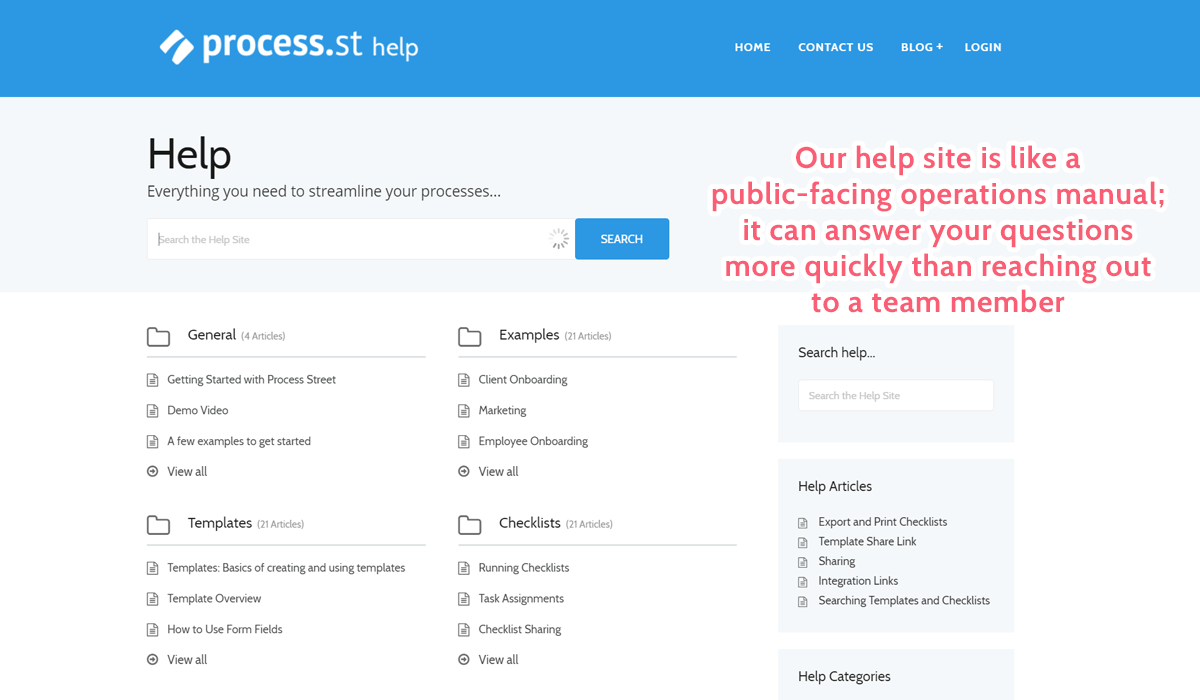
Processes are documented clearly
One of the biggest advantages of having an operations manual is that it forces you to have fully documented processes for every task you do more than once. This might sound like a pain to set up, but the long-term benefits of having them are massive.
Aside from increasing your efficiency and highlighting problems in your current processes, the consistency your business achieves is at the core of why processes are important. By having a method that can be executed perfectly time after time, you’re standardizing your business model, making it easy to find problems and deal with them.
Consistent operations improve business scalability
Without a consistent and reliable business model, it’s next to impossible to scale your business. By having an operations manual to store your SOPs and important internal data, you can easily onboard new employees and identify the factors limiting your ability to scale.
Not only that, but having documented processes in the first place will mean that your operation runs with less wasted time and money, making it able to rapidly expand.
If documenting all your processes seems like a daunting task, fear not. Our Process Library Checklist will walk you through every step of creating your new library and ensure that everything is clear, consistent, and organized.
⬇️ Click here for a preview of the Process Library Checklist Workflow
Process Library Checklist Workflow
Click here to open the Process Library Checklist Workflow in a new tab!
⬇️ Click here for a preview of the Process Library Checklist Workflow
Process Library Checklist Workflow
Click here to open the Process Library Checklist Workflow in a new tab!
Everyone is accountable
A major part of reducing human error is to making everyone accountable for their actions. By detailing the company hierarchy, job descriptions, and parties involved in a given task, you’re effectively keeping everyone accountable for what they need to do, and who they need to talk to if there’s a problem.
In other words, nobody can argue (with someone else or themselves) that a task or duty isn’t their responsibility, and the fact that anyone can access the operations manual means that everyone else will know it too. The knowledge that everyone else knows what you’re responsible for is a brilliant motivator, so your team’s output should also increase.
Important resources and processes are centralized
You could document your processes, hierarchy, job descriptions, emergency procedures, and more all without creating an operations manual. After all, it’s only once they’re collected in a single location that they turn from random files into a coherent document.
However, by centralizing all of this information you’re making sure that everything is available for anyone who needs access at any time. There’s no question about whether the process you’re following is the most recent version because everything is always up-to-date and stored in the manual.
Admittedly, this will depend on the format of your manual. A physical file (a book or folder) will need to have items reprinted with corrections or potentially even a complete re-issue to avoid lengthy and confusing appendixes. Digital operations manuals do not suffer the same problem, giving them an advantage over physical copies.
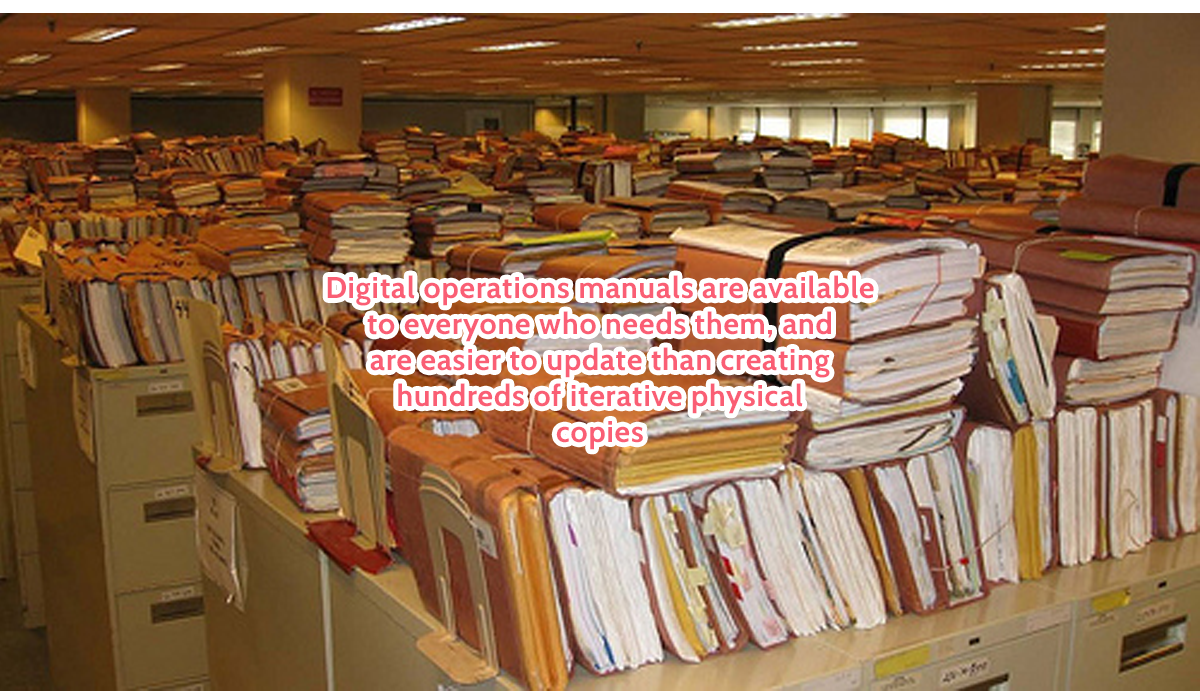
What to include in your operations manual
Much like with an employee handbook, the challenge here is to include enough detail in your operations manual to serve as a comprehensive knowledge base for your team, but not so much as to bore them into complacency.
If you go into unnecessary detail, you’ll either make them want to skip the instructions or leave them more confused than when they started, making the entire thing pointless. Not enough detail, however, and your team won’t have enough information to correctly and consistently perform the task.
To this end, you’ll need to include sections for your:
- Company hierarchy
- Job descriptions
- Contact details
- Documented processes
- Emergency procedures
To give you a better idea I’ll tackle each of these sections in turn.
⬇️ Click here for a preview of the Checklist for Writing an Operations Manual workflow
Checklist for Writing an Operations Manual
Click here to open the Checklist for Writing an Operations Manual in a new tab!
⬇️ Click here for a preview of the Checklist for Writing an Operations Manual workflow
Checklist for Writing an Operations Manual
Click here to open the Checklist for Writing an Operations Manual in a new tab!
Company hierarchy
Here you need to explain the layout of your company, kind of like stating the “family tree” of who reports to who. There’s not much to explain here in terms of content (since it will greatly vary depending on your size and layout), but you do have a couple of options for how to present it.
For example, you could create a text document and use subheaders to separate the various teams, with a brief description of who reports to who. I’d recommend using a visual flowchart to do this instead though, as all you really need to show here is the order of things, and a single chart is much easier to follow than a long-winded document.
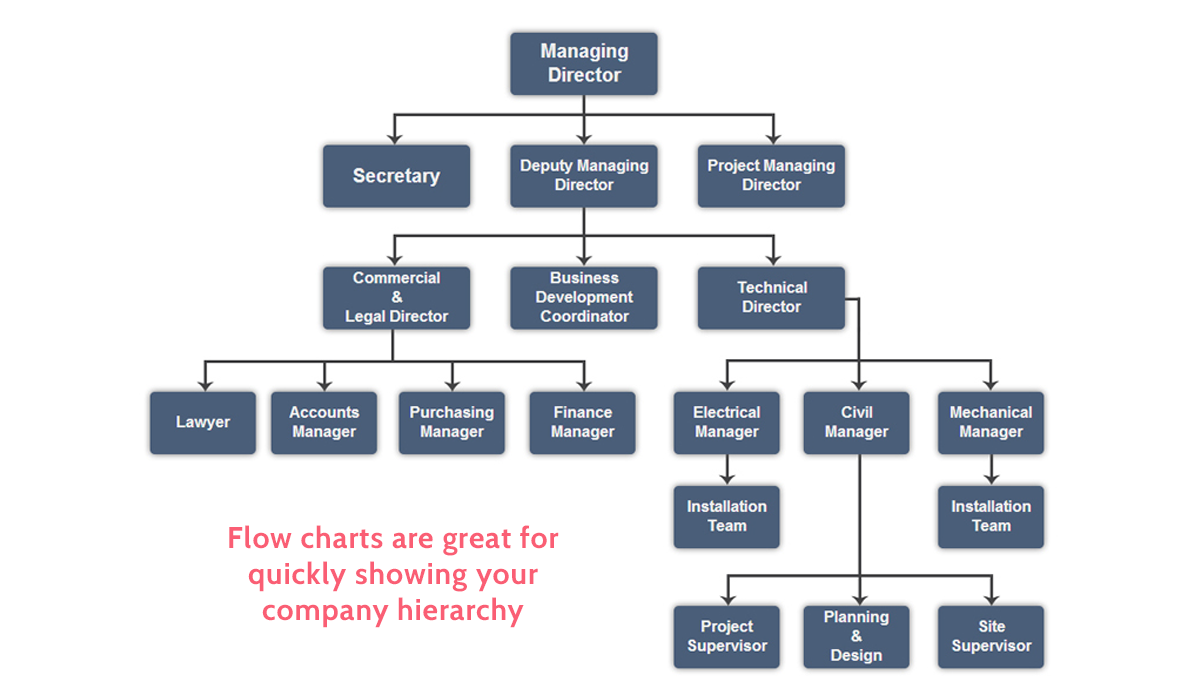
Try to focus more on the job titles than specific people (eg, managing director), as then you won’t have to go back and make changes whenever your hire someone new or someone changes position.
Job descriptions
If the company hierarchy is a scannable chart, your job descriptions list is the information to back it up. While not necessarily job descriptions (although feel free to use them), here you should be going through each role in your business and laying out their responsibilities, skills, who they answer to, and who answers to them.
In other words, give an overview of what the position is in more detail, but keep it in the context of the hierarchy. That way if someone isn’t sure who to contact about a particular issue (or wants to collaborate over a specific task), they can skim the hierarchy to get an idea of who to contact, then confirm it through the job description.
If you need some help, check out our post on how to write a job description.
Contact details
Here you need to provide contact details for everyone in your company, and those outside who are in close contact. Easy.

You could combine this part of the operations manual with the job description section if you want to have a more compact document, but having a separate list of contacts can make it easier to skim through and immediately get the correct information.
Documented processes
Your documented processes will be the largest section of your operations manual, especially as your company grows. The trick is recording them in a way that’s comprehensive, but easy to follow.
Whether you’re using a word processor or a better piece of process documentation software, you’ll ideally have a set of checklist templates that give basic instructions to complete various common tasks. These are best separated into categories (such as “accounting processes” or “editing checklist“) since you should be documenting anything that you need to do more than once to make sure you have a consistent approach to it.
Emergency procedures
Finally, any emergency procedures should also be stored in the operations manual. “Emergency” could mean anything from a server security breach to an onsite fire. If it’s possible and could result in damage to your company, product, and/or staff, at least take note of it and draft out a procedure for dealing with it.
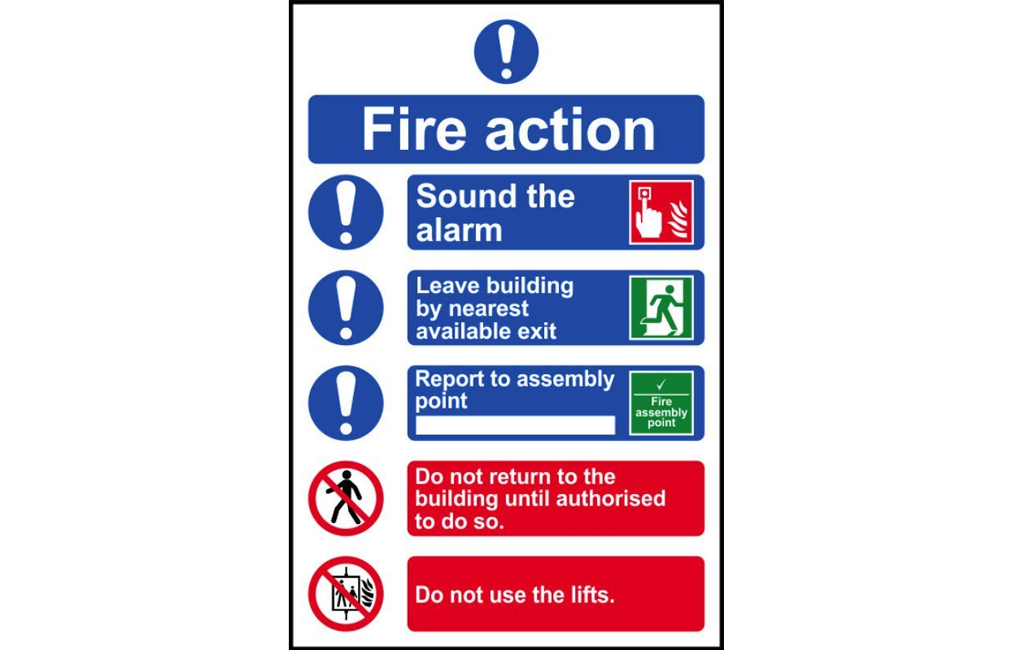
You don’t have to cover every situation under the sun, just the most likely ones to occur, and give the best way to limit the damage.
How to create an operations manual
Okay, so you know what you need to include in your operations manual, but now you need to know how to go about creating it. There isn’t a huge amount to say here, but to briefly cover it, you’ll need to:
- Choose the platform for your manual
- Plan a consistent layout
- Create the manual
- Improve any processes you can
Choose the platform for your manual
First, you need to select how you’re going to create your operations manual. You could use a word processor to create and print out physical copies and then store them in a file, but there are a couple of problems with that.
Printing out a physical operations manual means that any changes you make will need to be added in an appendix or you’ll have to completely reprint the document. Using an appendix can quickly make your manual difficult to use because rather than being the definitive source for your employees, you’re handing them a convoluted mess of addendums to an outdated process.
Having to print out an entirely new manual (or at least a chapter of it) every time you update it is just as bad. Unless you only print one copy at a time it will be difficult to recall every existing copy and replace them, leaving plenty of room for human error to sneak back in with an outdated manual.
Instead, try using Process Street as your bpm software. By either creating your own template or using one of our premade items, you can document your processes to run as useful, actionable, trackable workflows. Plus, everything you create has variable permissions to allow access to only those who need it, protecting your sensitive information.
Not only that, but having your processes in a central location means that you can access them whenever you have an internet connection. If you really want to have a physical copy of your processes to hand out, you can also print them out from Process Street, eliminating the one advantage a program like Word may have.
Sign up for a free account today by clicking here.
Set a consistent layout
Setting up the layout for your manual will largely depend on the platform you’re using to create it, but the most important thing is that it’s consistent across the entire document.
If you’re using a word processor, the details you need to sort out are simple aspects such as the font you’ll use, how you’ll separate each section, whether you’ll include images or screenshots, a page counter, and so on.
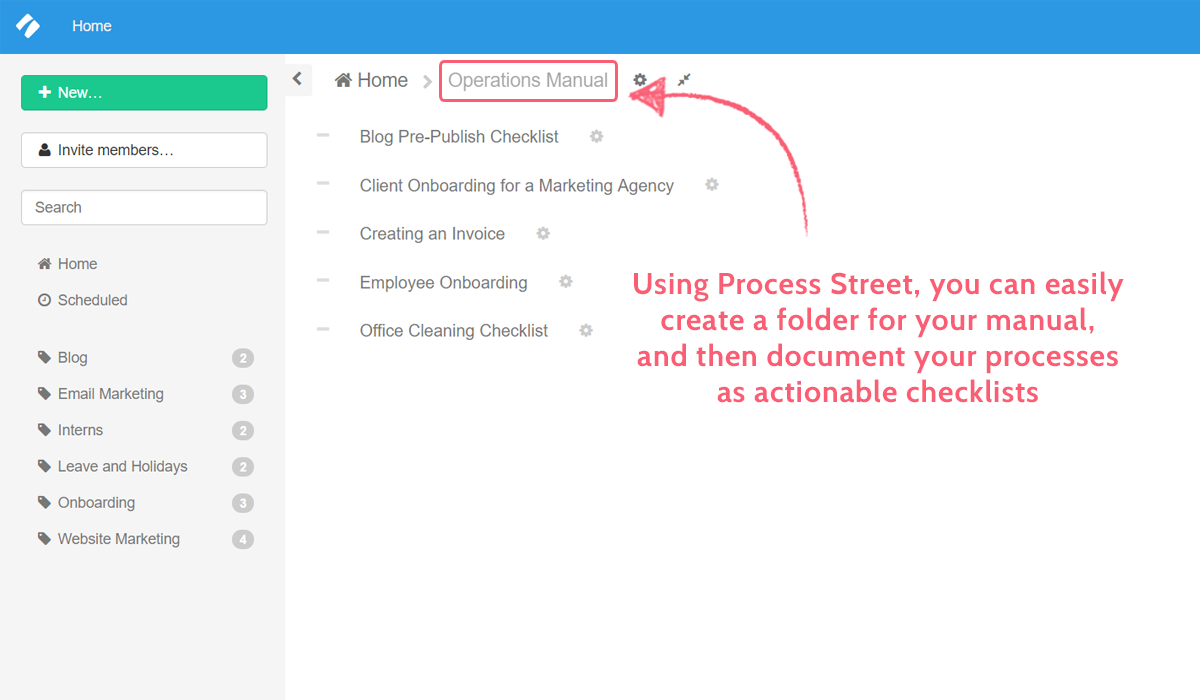
Meanwhile, if you’re using Process Street, you can manage your operations manual by creating a folder, and then organizing your processes into subfolders. Processes can then be interlinked, and workflow run links can be pasted wherever you want to let you easily run checklists no matter what you’re doing online.
In addition, the Pages feature adds a whole new level of functionality. Pages are essentially your next favorite free knowledge base software. Unlike the traditional Word file, Pages act as living documents – meaning you can update them whenever you need to and the changes will be immediately applied to everyone, everywhere.
Paired with Process Street’s dynamic Workflows, you can create a powerful library of essential operations, providing a single source of truth for your entire company.
A note on pages vs. workflows:
Workflows are actionable processes that you can run multiple versions of, assign to your team, track progress, and create reports for. Think onboarding process, auditing, and any other process you perform on a regular basis.
Pages are your team’s knowledge repository for documents like your company mission statement or marketing style guide. Pages are free forever regardless of which Process Street account you have (Workflows are limited to 5 for the freemium account).
Create your manual
Once you’ve formalized the layout of the operations manual it’s time to actually create it. Go through the items mentioned above (the hierarchy, job descriptions, processes, etc) and document each of them in turn.
Ideally, you’ll want to do this while working with the rest of your team or at least the managers of your various departments. That way everyone who will use the manual is involved in creating it and is more likely to promote its regular use. Plus, having people more experienced than yourself to help you document your processes means that they’re far more likely to represent how the task is actually carried out.
You can also use our Operations Manual Template workflow to help structure your new operations manual.
⬇️ Click here for a preview of the Operations Manual Template workflow
Operations Manual Template workflow
Click here to open the Operations Manual Template workflow in a new tab!
⬇️ Click here for a preview of the Operations Manual Template workflow
Operations Manual Template workflow
Click here to open the Operations Manual Template workflow in a new tab!
Speaking of which, after you’ve documented your processes for the first time you’ll want to do a little process improvement and see if there’s anything you can tweak to make them better. There’s always something you can do to boost your efficiency and consistency, whether it’s by using better software or tackling a problem in a different way.
Fortunately, we have some workflows for that:
⬇️ Click here for a preview of the Process for Optimizing a Process Workflow
Process for Optimizing a Process Workflow
Click here to open the Process for Optimizing a Process workflow in a new tab!
⬇️ Click here for a preview of the Process for Optimizing a Process Workflow
Process for Optimizing a Process Workflow
Click here to open the Process for Optimizing a Process workflow in a new tab!
⬇️ Click here for the Internal Audit Procedure for an Operations Manual Workflow
Internal Audit Procedure for an Operations Manual Workflow
Click here to open the Internal Audit Procedure for an Operations Manual Workflow in a new tab!
⬇️ Click here for the Internal Audit Procedure for an Operations Manual Workflow
Internal Audit Procedure for an Operations Manual Workflow
Click here to open the Internal Audit Procedure for an Operations Manual Workflow in a new tab!
Don’t let your operations manual bore your team to death
The cardinal sin I’ve seen by scouring Google for useful operations manuals is that everything is dull to the point of being useless. Doing this is a one-way ticket to invite disaster once more, as your employees will be more likely to ignore your processes in favor of relying on memory.
So, rather than invite a Third World War, make your operations manual detailed enough to be useful, but simple enough to follow without sending the reader to sleep. Your company (and the general population) will thank you for it.
What’s the best way you’ve found to create an engaging operations manual? Have any horror stories from someone not following procedure? Let me know in the comments below.







 Workflows
Workflows Forms
Forms Data Sets
Data Sets Pages
Pages Process AI
Process AI Automations
Automations Analytics
Analytics Apps
Apps Integrations
Integrations
 Property management
Property management
 Human resources
Human resources
 Customer management
Customer management
 Information technology
Information technology



Ben Mulholland
Ben Mulholland is an Editor at Process Street, and winds down with a casual article or two on Mulholland Writing. Find him on Twitter here.